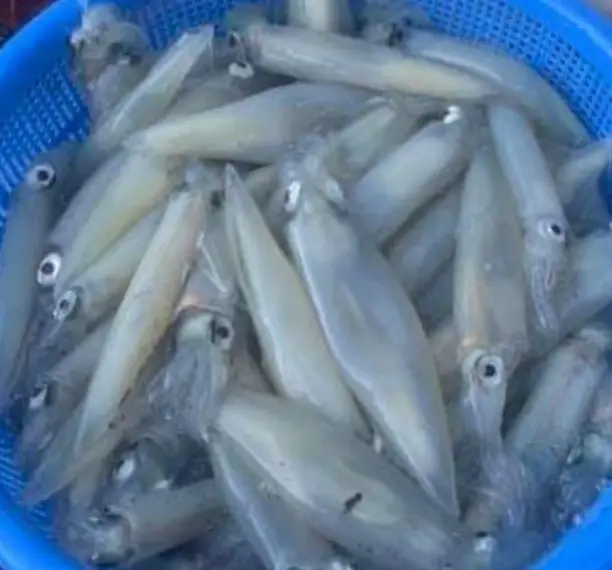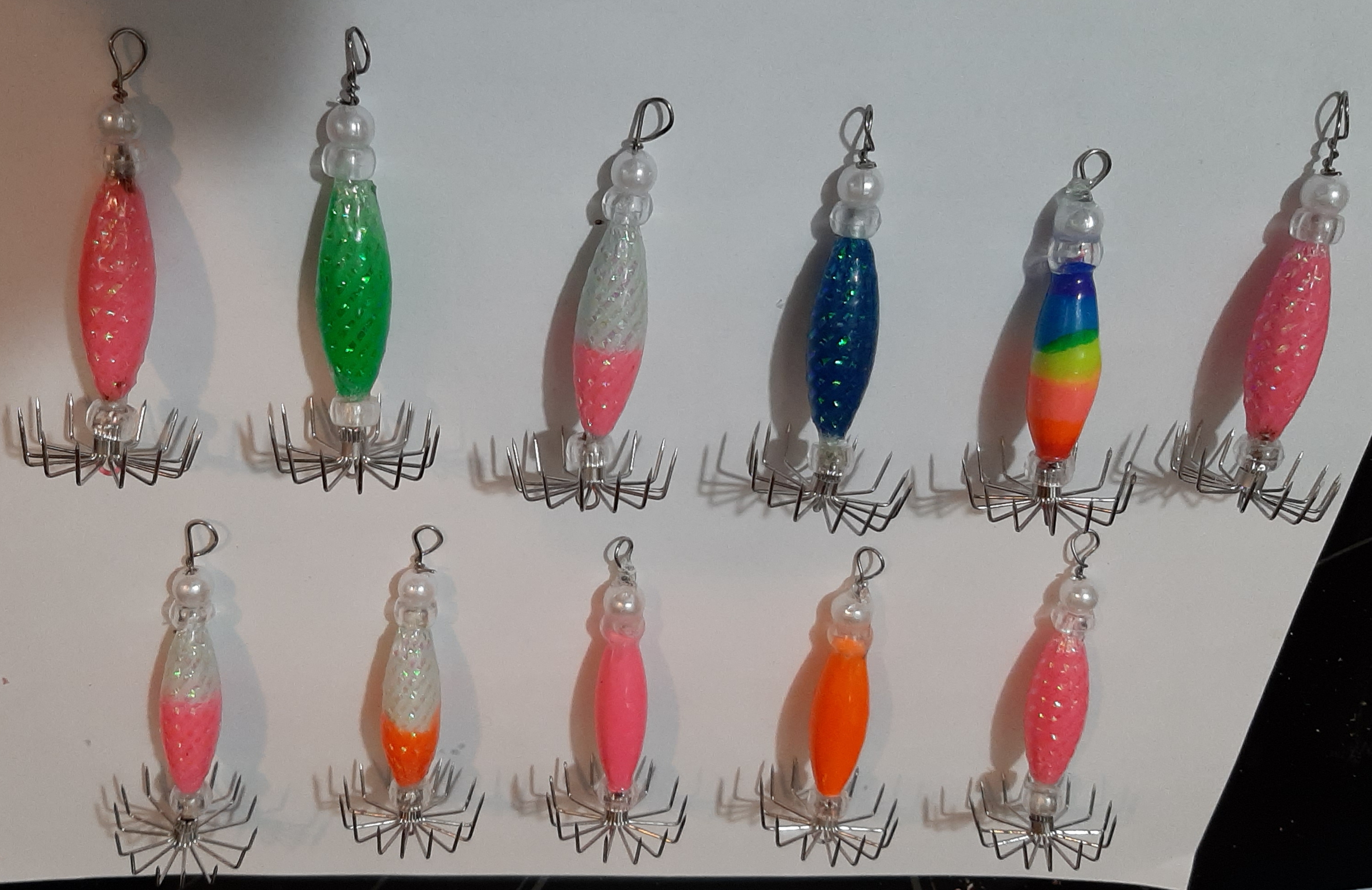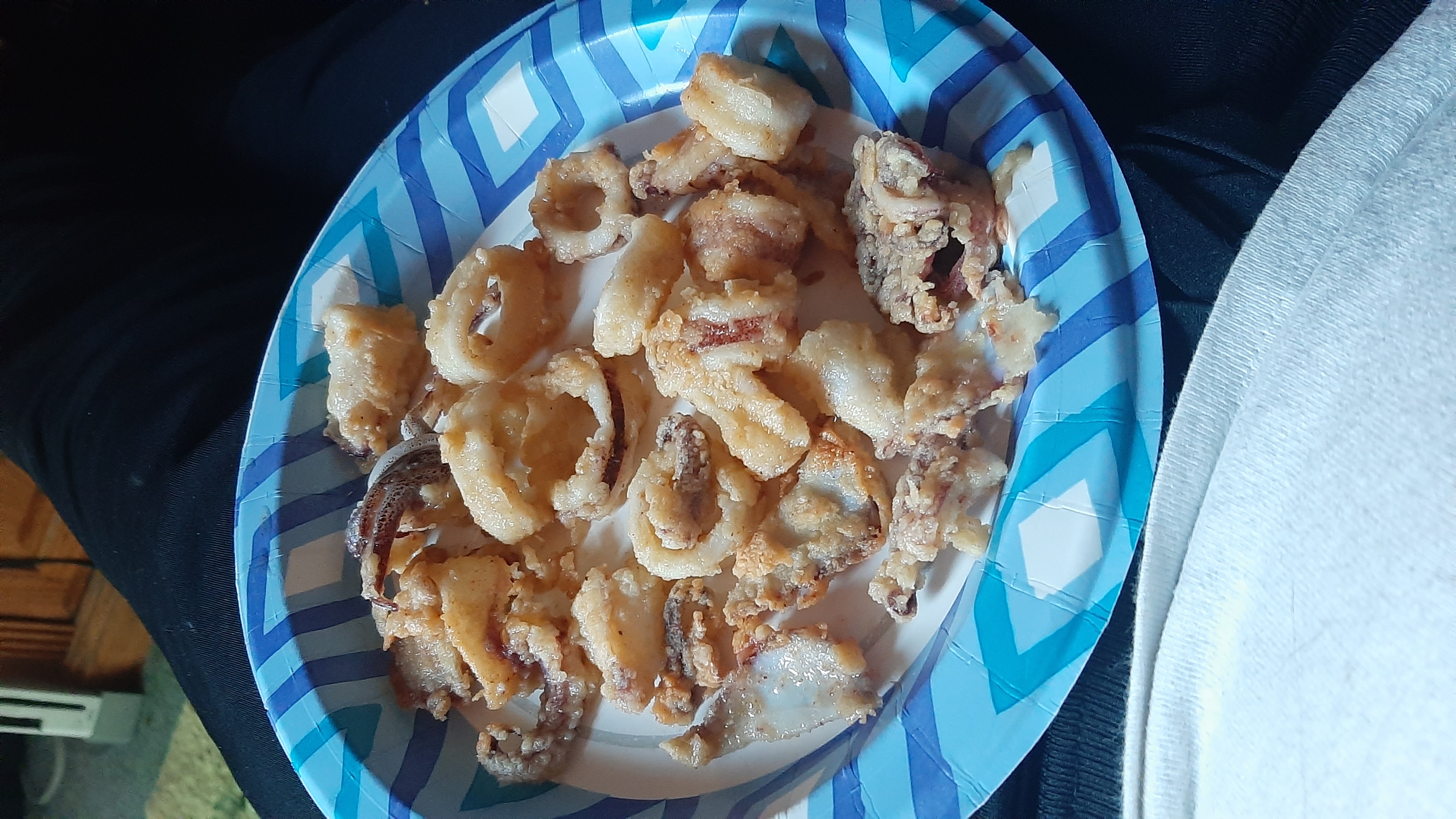Decoding Squid Jigs
by
Hannah Pennebaker , November 07, 2020
With salmon season winding down, many anglers like myself are starting to come out of the rivers and venture to the many piers around Puget Sound to jig for squid. During the winter months, thousands of California market squid show up in our waters for their yearly spawn. These squid live only 7-9 months, and usually average 4 to 12 inches long. The action heated up earlier than expected this year; I heard of fishermen getting their limit in early September rather than November, like usual. Squidding can be done day or night, it all depends on if the schools are there during that particular time. One note about squidding at night: you will need to either bring a light yourself, make use of the dock lights, or fish next to someone with a light. Squidding in the day can be just as productive, but during the night you'll need to light up your presentation and attract the squid. Dedicated squidders bring their own heavy duty lights and generators. I prefer to use an LED light array hooked up to a battery, for a quieter and more portable setup.
Squid jigging can seem intimidating to the casual observer. There are rows of people shoulder to shoulder, twitching small, multicolored jigs circled with sharp hooks. There are as many kinds of squid jigs as there are fishermen. You'll find that many people at the pier build and sell their own jigs, usually for $3-5 a piece. Alternatively, many sporting goods stores around the area sell them. But how do you choose your squid jig? Technique certainly matters, you won't catch many squid if you aren't jigging at the right depth or location. But the jig is the most important piece of the puzzle. Color, weight, shape, and size all matter. Squid are surprisingly fickle creatures. You can have your technique nailed down, but one jig may get a limit one night, but the next night, no takers. There are a lot of things to consider when choosing a winner squid jig. Here are some tips to get you started, and hopefully even seasoned squid fisherman can learn something new.
To understand what kind of jig to use, let's talk about the behavior and habits of squid. We aren't quite sure why squid attack our jigs. One school of thought believes that they are attempting to mate with the jig, as they could resemble small squid. This makes sense because squid are spawning during their time here. I've experimented with 3D printed jigs shaped like squid. They didn't seem to work as well as traditional jigs, however. The shape didn't have that flutter as it fell that squid seem to key in on. The other school of thought is that jigs resemble small baitfish that the squid are feeding on. Some manufacturers do make shrimp and herring shaped jigs. I have yet to experiment with these, but I do know that they work well with larger squid overseas. Market squid tend to key in on smaller offerings. They are feeding on small bait fish like herring, anchovies, and shiner perch. Your jig flutters as it falls, like an injured baitfish. You're triggering a reactionary attack, and your jig needs to have the right action. Try jigging near the surface and watch your jig on the fall. It should flutter slightly while sinking In short, action and shape are one of the first things to consider when squid jig shopping.
Perhaps the most hotly debated topic among squid fishermen is color. Some swear by solid colors, others swear by a mix of 2 or 3. It's a good idea to keep a variety of colors handy. Orange, pink, and blue are some of my favorites. Some manufacturers wrap their jigs in mylar for a bit of extra shine, others leave their bare. My go to is a mylar wrapped orange and white jig made by Kraken LLC. These are hand made, custom jigs made by a local squid fisherman. He can make any size, shape, weight, and color you can think of. He's often at Les Davis Pier, or you can find him on Facebook. If orange doesn't work, I'll often try a solid blue next. It doesn't hurt to take a look at jigs that others who are catching squid are using.
Regardless of what color, size, and pattern you choose, you'll want to tie your jigs in a certain order to reduce the possibility of tangles. Your top jig will be small and light, your bottom one will be large and heavy, and your middle jig will be somewhere in between. The largest I would go is 1 ounce and about 3 inches long. You might run into some much larger squid jigs out there with multiple rows of hooks. These are made to target the much larger humboldt squid, rarely found in our waters. Keep in mind that there are some situations where single jigs tend to work better than multiple ones tied in sequence. For beginner squidders, one or two jigs may be best to start off with. For seasoned squidders, jig count is another way to experiment if the squid just aren't biting what you have.
Squidding is a fun, family oriented activity for all ages. Kids can simply tie on a jig, drop it down, and jig until they feel the weight of the squid on. Any rod and reel will do the job, and squid jigs are cheap and easy to find. There is a generous 10 pound limit, just about enough to fill a bucket. Cleaning and preparing them is quick and simple, there are many videos on the internet showing you how. Here's hoping these tips help you get a bucket of squid for your frying pan today!
Hannah Pennebaker graduated from Pacific Lutheran University with a degree in Environmental Studies. She enjoys both freshwater and saltwater fishing adventures in the Puget Sound area with her fishing group, the Straw Hat Fishermen.
Comments
Why is this comment inappropriate?
Delete this comment? Provide reason.



